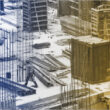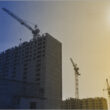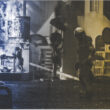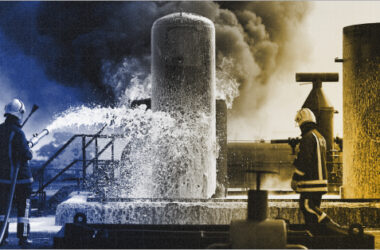When it comes to protecting our homes and properties from unforeseen disasters, Fire Insurance plays a crucial role. Among the many terms and acronyms associated with Fire Insurance policies, one that often catches attention is STFI. This term represents an essential coverage that safeguards policyholders from damages caused by specific natural calamities.
In this article, we will explore the meaning of STFI in Fire Insurance, its scope of coverage, the conditions under which it applies, and its significance for policyholders. By the end of this discussion, you will have a clearer understanding of how STFI coverage works and how it enhances the protection of insured property against natural disasters.
The Meaning of STFI in a Fire Insurance Policy
STFI stands for “Storm, Tempest, Flood, and Inundation.” The STFI cover is a standard feature included in a Standard Fire & Special Perils (SFSP) Insurance Policy, which protects property against loss or damage caused by any of the covered perils. In most cases, STFI is not an additional add-on but an inherent part of Fire Insurance policies, unless specifically excluded by the insurer.
The policy wording for STFI coverage typically states:
“Loss or Damage caused by Storm, Tempest, Cyclone, Typhoon, Tornado, Hurricane, Flood or Inundation, excluding those resulting from Volcanic Eruption, Earthquake or other convulsions of nature.”
STFI coverage ensures that insured properties are protected from damages caused by specific weather-related perils, providing financial support to policyholders in case of natural calamities.
The Perils Covered Under STFI in a Fire Insurance Policy
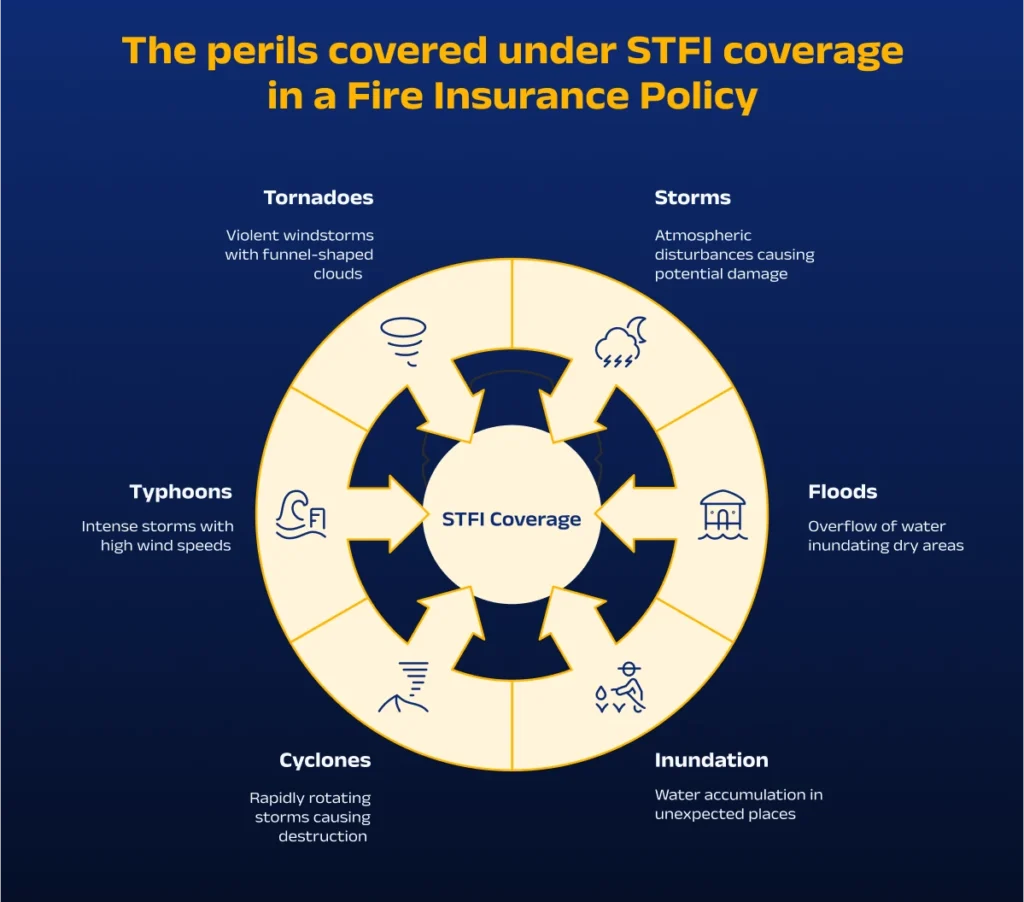
1. Storm and Tempest
A storm refers to an atmospheric disturbance involving strong winds, rain, hail or snow, which can cause property damage. The Oxford Dictionary defines a storm as “very bad weather with strong winds and rain, and frequently thunder and lightning.” Similarly, a tempest is defined as “a violent windy storm usually accompanied by hail, rain or snow.”
Although storms and floods are related, they are distinct perils. A storm can lead to flooding, but flood-related damage is covered separately under flood and inundation perils.
2. Floods
A flood is the temporary inundation of normally dry land by an overflow of water from natural sources like rivers, seas or lakes, or due to heavy rainfall. It is different from water damage, which is typically caused by internal sources like burst pipes.
A flood claim usually arises when water originates from an external, natural source and affects multiple properties. On the other hand, water damage claims stem from internal issues within a single property.
3. Inundation
Inundation refers to water accumulation in an area that is typically dry, leading to submersion of land or property. It is often a consequence of flooding when excess water spreads over an area, causing damage.
4. Cyclone
A cyclone is an intense weather system characterised by low-pressure circulation and strong winds. It often brings heavy rainfall and can lead to severe property destruction. Cyclone-related damages are covered under STFI in Fire Insurance policies.
5. Typhoons and Hurricanes
A typhoon is a tropical storm with wind speeds exceeding 119 km/h, while a hurricane typically forms over warm ocean waters and causes widespread destruction. Both perils are included under STFI coverage.
6. Tornado
A tornado is a violently rotating column of air that causes localised but severe destruction. Unlike cyclones, which cover larger areas, tornadoes create intense damage in concentrated locations. If an insured property is impacted by a tornado, the resulting losses will be covered under STFI protection.
Who Needs STFI Coverage in Fire Insurance?
1. Business Owners
Commercial property owners, including factories, warehouses and office spaces, require STFI coverage to safeguard their assets from natural calamities.
2. Real Estate Developers and Builders
Properties under construction are vulnerable to storm-related damages. Developers and builders opt for STFI coverage to protect their projects during the construction phase.
3. Public Institutions
Schools, hospitals, Government buildings and non-profit organisations may also include STFI coverage in their Fire Insurance policies to ensure financial protection against natural disasters.
Factors That Influence Fire Insurance Premiums
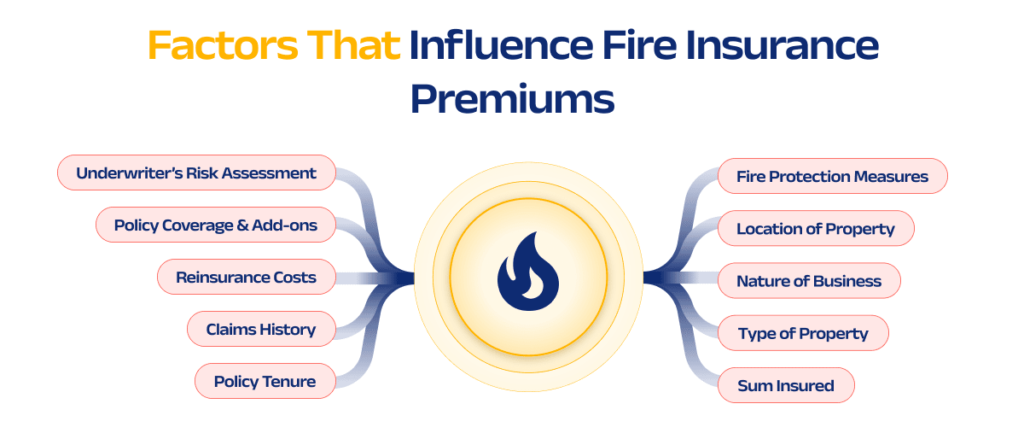
Several factors determine the cost of Fire Insurance premiums in India:
- Nature of Business – High-risk industries like chemical manufacturing pay higher premiums than low-risk establishments like offices.
- Type of Property – The construction material (fire-resistant vs. non-fire-resistant) and age of the structure affect premiums.
- Sum Insured – Higher insured values lead to higher premiums.
- Location of Property – Properties in disaster-prone areas have increased premium costs.
- Fire Protection Measures – Fire safety systems like alarms and sprinklers can reduce premium costs.
- Claims History – Frequent claims may result in higher premiums.
- Policy Coverage & Add-ons – Additional coverages, such as STFI, increase premium costs.
- Reinsurance Costs – Higher reinsurance costs for insurers can lead to increased premiums.
- Policy Tenure – Long-term policies may offer premium discounts.
- Underwriter’s Risk Assessment – Insurance companies evaluate risk factors like surrounding properties and operational hazards before determining premiums.
By understanding these factors, businesses and property owners can better manage their Fire Insurance costs while ensuring optimal coverage.
Final Thoughts
STFI coverage in a Fire Insurance Policy provides essential financial protection against natural disasters like storms, tempests, floods and cyclones. It ensures that businesses and property owners can recover from the losses caused by such calamities.
Understanding the scope of STFI and how it applies to your property is crucial for making informed insurance decisions. If you require more details or need assistance in choosing the right Fire Insurance Policy, BimaKavach can provide expert guidance. With their help, you can select the best insurance coverage tailored to your specific needs, ensuring your assets remain protected against unforeseen disasters.


